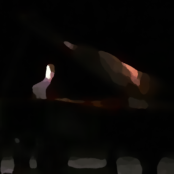Search the Community
Showing results for tags 'divertimento'.
-
With this piece, I wanted to explore the application of the five classical canons of rhetoric to music. These canons serve as an inspiration in some way to each of the movements; here, the first -- invention -- has its own form, and it also relates to "invention" in the musical sense, i.e. two-part counter-point (section F). It is also the literal act of producing material that can be used later in the work; I am still working on the following movements. Let me know your thoughts!
-
This is my second attempt at a divertimento in the classical style. It's meant to be a light and enjoyable work for a small string ensemble (I tried to make it possible for either a quartet or a larger section). I'm primarily doing these divertimentos as exercises in improving my four-part writing. One of the unifying factors between the movements is a consistent emphasis on weak beats throughout the piece, although I may have gotten a bit carried away with this aspect. I also sneaked a few bVII chords in to a couple of the movements. Let me know what you think! Thanks for listening.
- 4 replies
-
- 1
-

-
- divertimento
- strings
-
(and 1 more)
Tagged with:
-
This as an experiment into complex forms: Being based on the Five Classical Canons of Rhetoric, the second of this set is disposition. This piece is designed to outline the thought process by first taking raw information (pizzicato entrance), organizing it into a series of fugues (each being progressively more resemblant to the theme running through the set, the "thesis" theme), until the material is combined to create a satisfactory product (having resolved all issues of synthesis, then the end section) to be used in the overall metaphorical "oration" (i.e. the intent of rhetoric). I have more detailed an explanation attached, as well.
- 6 replies
-
- modern
- divertimento
-
(and 1 more)
Tagged with:
-
Divertimento a 3 in B-flat, for 2 Violins and Violoncello I. Allegro di molto II. Andante III. Allegro giusto, alla breve Composed: April 4-17, 2017 Style: Classical, circa 1790 I enjoy spending my lunch hours at work productively when I have the energy, sketching or doing exercises. A couple of weeks ago I started a counterpoint exercise that I worked on for the next couple of days, and it turned out well. The thought occurred to me that perhaps it might serve as a movement in a larger work, in which I might also use some old ideas that had been waiting around in the back of my mind for years, and the idea for this little divertimento was born. Most of this work was written by hand while lunching in my car. The term divertimento denotes a multi-movement work that is light in character, for the diversion or amusement of the audience or players (or both), as the name implies. This one is in three movements, and is modeled after similar works I have played and heard by Joseph Haydn (1732-1809). It is quite short, much like Haydn’s examples, lasting just under 10 minutes. Description: The energetic first movement (Allegro di molto), in sonata-allegro form, is dominated by a dynamic 4-measure opening motive that I have had in my mind for many years, which I found opportunities to develop throughout the movement. The contrasting second theme, smoother and calmer than the first, is stated canonically by the two violins, accompanied by a chromatic accompaniment figure in the ‘cello adding harmonic complexity. The opening theme is then restated and developed into a codetta to close the exposition, which is then repeated. The development section treats part of main theme in close canon, modulating to distant keys to develop the second theme before making its way back to the tonic B-flat for the recapitulation, and the movement ends with a short coda, again based on the opening theme. The second movement (Andante), in the subdominant key of E-flat, is in the simplest of binary forms (ABAB), and begins somewhat statically, setting a mood of calm to contrast with the verve of first movement before gradually becoming more florid and interesting starting in m. 6. The second theme is a pretty melody I have had in the back of my mind for at least 30 years, patiently waiting for the right application, and now it has a place at last. The second time it comes around, the eighth note accompaniment is changed to sixteenth notes for variety. The movement closes with a very short coda, a varied restatement of mm. 11-12. The third and final movement (Allegro giusto, alla breve), originally conceived as the aforementioned counterpoint exercise, is a light-hearted fugue in an Italianate style, on an original 6-measure subject reminiscent of Handel. There are four statements of the subject by each of the instruments, including statements in stretto and an inverted statement, interspersed with episodes developing foregoing material. The movement closes with a coda based on the rhythm and contour of the last measure of the subject, on a pedal B-flat in the 1st violin and ‘cello alternately, ending in a plagal cadence. Concerns: 1st Movement – I’m a little worried that perhaps I have overdeveloped the opening motive by repeating it too often, even if I vary it – particularly the four chords at the beginning of it. I’m open to the idea of reworking the movement slightly if I get a lot of feedback that this is a problem. I love developing themes, but I want to avoid monotony. 3rd Movement – I’ve been writing counterpoint as a serious avocation for years, having listened to a lot of it and read several books on the subject. I even authored the very popular “Fugue Crash-Course” here before I knew as much as I know now, yet I still feel insecure and mystified. I try to proceed confidently, but since I have taught myself everything I know, I constantly worry that I’m making mistakes out of ignorance. It has happened before several times. I want to make sure what I’m doing is “by the book,” so if any of you notice anything in this fugue that you know for certain is wrong or mishandled, I want to know about it. I hope you enjoy this little piece, and thank you for your kind attention.
- 4 replies
-
- divertimento
- trio
-
(and 2 more)
Tagged with:
-
Divertimento a 3 in F, for 2 Violins and Violoncello I. Allegretto grazioso (3/8) II. Andante (2/4) III. Allegro giusto, alla breve (cut time) Composed: 2011 Style: Classical, circa 1790 This work is the first of two such divertimenti for this instrumentation I have composed to date, the second of which having been written and posted here just recently. I consider it one of my more charming and attractive works – a personal favourite – and among my most ingenious, a tour de force of development and counterpoint (of which I am very proud) without being obvious about it. One hardly realizes that motives are continually being developed throughout both the first and second movements, in as unassuming a manner as possible. It is in three movements, and lasts 10-½ minutes. Description: The first movement (Allegretto grazioso), in Sonata-Allegro form, opens with a lilting, graceful theme of rising steps that ascend the scale in slurred pairs, followed by a series of descending scales in skittering triplets, and a few “sighing” gestures, that together I feel form one of my prettiest melodies. From it are then extracted the following three discrete motives that are developed almost constantly throughout the movement: The playful second theme contrasts with the elegance of the first before a pair of turns and a florid cadence transform it into something more refined. The development section further explores the possibilities of the various motives around a central sequence, and culminates in a rising and falling series of coupled steps (motive 1) on a pedal tone that brings the music to a very satisfying return of the opening theme in the recapitulation. The second movement (Andante), in binary form, is in the subdominant key of B-flat, and opens with a coquettish theme from which, as in the first movement, are extracted the following two discrete motives that are developed elsewhere in the movement: This theme is then repeated in the tonic minor, and through a surprising modulation makes its way to the movement’s dominant key of F. There is no second theme per se, but rather a contrapuntal development of the foregoing motives. The third and final movement (Allegro giusto, alla breve) is a rollicking, rather wacky fugue (how often does one hear those words together?) on a jaunty subject, beginning on a syncopation, and characterized by an unexpected, dissonant suspension, accented sforzando for humourous effect. The bass line to the subject, introduced in the ‘cello, is worked canonically into the entire exposition as if it were a second subject; hence the exposition functions much like a double fugue, though it doesn’t continue that way. I didn’t take the construction of this fugue too seriously (this was not a counterpoint exercise in earnest), being more interested in keeping it light and quirky; and although the subject begins on the fifth degree of the scale, I decided against the pedantic complexity of devising a tonal answer in the exposition – though otherwise it proceeds conventionally for the most part. Passing dissonances run rampant, and transitions and modulations are often purposely abrupt, taking unexpected turns intended to raise eyebrows, and a smile or two. After a final sequence on a pedal tone and a truncated statement of the subject, even though it feels like the movement should continue, in a rush it throws itself headlong to a sudden, crashing finish as if it hit a brick wall at a run. This is probably the oddest piece of counterpoint I’ve ever written, but I feel the jocular treatment of what is usually by its nature a serious form contrasts well with the sunny warmth and charm of the previous two movements. Premiere: This work was premiered in July 2016 by members of the Octava Chamber Orchestra, a community orchestra in the Seattle, Washington area, as part of a unique concert of Baroque and Classical music by living historicist composers. Although I regret I could not attend the performance, I did receive the recording of it that I have posted here below. The outer movements are played a bit too slowly, and there are some mistakes and inaccuracies; but I’m gratified that the players took the piece seriously and made a sincere attempt at a sensitive interpretation. Overall, it’s one of the better performances I’ve ever received, and I’m quite pleased (to say nothing of being honoured, and very fortunate). Musicians’ and Audience Feedback: My contact with Octava, who played 2nd Violin at the premiere, told me that the musicians loved the piece. Though they found it somewhat challenging here and there, they said it was well written for the instruments and a real pleasure to play, just as I had hoped; divertimenti are supposed to be fun! It was the first work on the programme, and was very warmly received by the audience. Thank you for your kind attention, and enjoy!


